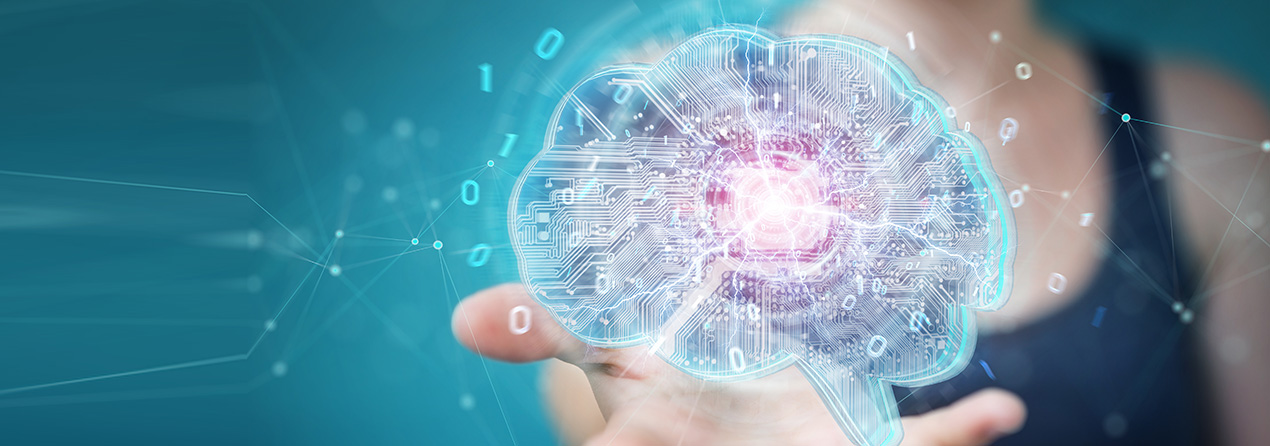Cognitive creativity – The chicken-or-egg dilemma

Which came first, cognition or creativity? As science and our understanding of our cognitive abilities evolves, we often realize that our traditional, firm convictions can easily transform to chicken-or-the-egg dilemmas.
Although it was until recently widely believed that creativity is a near-magical ability of the few, associated with the power to transcend common thinking and the talent of an individual to suppress cognition in favour of artistic improvisation, recent theories suggest that it can be taught. But why is this so pioneering?
Cognitive creativity – A two-way relationship
When admitting that a process can be taught, it leaves the realm of unintelligible and becomes a set of, potentially complex, but explainable steps that lead to its achievement. We define cognition as the process of understanding something through one’s thoughts, experiences and senses. When describing creativity as a cognitive process, Dr. M. Schiering separated it into three phases: awareness, critical thinking and meta-cognition, the latter denoting the ability of humans to know and control their own thinking and learning abilities.
The relationship between creativity and cognition is however two-way, as the former can serve as an enabler of our cognitive abilities. Whereas our intelligence is usually associated with problem-solving, creativity can help us with open-ended problem-finding. By developing our awareness, we can evolve an important skill set related to an, until recently, undervalued human trait, that of emotional intelligence.
According to a 2016 world Economic forum report, creativity will be the third most important skill in the job market in 2020. In today’s era of automation, emotional intelligence is valued in the job market more than ever. With programming and Artificial Intelligence (AI) having automated all trivial problems, our society is in need of people aware and sensitive to the needs and wants of their surroundings.
Can machines be creative?
Our past misconceptions related to creativity, such as the impossibility of teaching it and the belief that it biologically belongs to the right brain hemisphere, had created the impression that it was a process extremely different from our other cognitive functions. Due to this surrounding aura of mystery, it was natural to consider it a human “privilege” and not attempt to equip machines with it.
After acknowledging creativity as a cognitive process however, we can view it as a potential application for Artificial Intelligence. Arguably the first thing that comes to mind when talking about manifested creativity is art. Indeed, AI has recently been used to generate paintings, musicor even movie trailers. This newly-acquired ability of AI is due to a recent family of deep neural networks called Generative Adversarial Nets, which can be used to generate their own data after being trained on large repositories to gain “inspiration”.
But creativity does not stop at art; and neither do AI applications. Empathy and out-of-the-box thinking are a part of many creative industries, with perhaps the most prominent examples being that of marketing and advertising. Creators, from artists to advertisers, have the common ability of analysing their surroundings and then coming up with something novel, that can be viewed as the product of the interaction of their own inner world with their environment. With this definition, how can we deny AI the ability to create?
Augmenting human creativity
Nevertheless, creativity has not been utterly demystified and automated. There are to date debates and no clear answers on whether computer programs can learn how to develop empathy, emotional intelligence and, most importantly, consciousness. At least not their own.
An indirect consequence of the prolific automation of most industries was the creation of room, time and energy for people to develop their own cognitive abilities. Instead of wasting human resources on collecting and analysing data, as well as testing and evaluating new ideas manually, people can today unload their brains from cumbersome thinking and embrace creative cognition.
Developing one’s emotional intelligence is an option and, soon, will be a responsibility when aspiring to survive in the increasingly automated job market. It is important for employees and employers to understand that developing one’s cognitive creativity is not a lonesome process, as it should transcend the individual and lead to team creativity, and ultimately, an overall work environment that reinforces creative thinking.
In light of this new perspective towards cognition, we can view machine and human intelligence as two similar, yet distinctive, forms of intelligence that complement each other, so that the end product of this cooperation can be larger than its parts.
A call to ethics in cognitive creativity
If computers are going to step out of the restrictive realm of automation executors and into the role of a cognitive creator, they are in need of a system of ethics. Morality has evolved throughout our history and has always required self-awareness and empathy, two traits that today’s AI system lack. Their absence is not due to complexity, deep learning after all is today capable of solving extremely complex problems, but due to our lack of a clear definition and understanding of awareness.
The practise of AI begun in a chaotic way, with successes springing up to create applications and products. But the realization of the immense effect that this technology has in our society has led governments and large companies to re-examine this “anarchy” and develop ethics guidelines for ΑΙ. Google has already made a failed attempt to make an AI ethics counciland the European Union is drafting Ethics Guidelines for trustworthy AI. The ethical problems become even more complicated when one considers international relationships, the discrepancy between systems of ethics among different countries and the involvement of AI in militaristic operations.
Creation is a cognitive process that our society has so far repressed due to the need for efficiency that comes through automation. As G. Land discovered in his survey “we are naturally creative and as we grow up we learn to be uncreative”. AI will undoubtedly change the job market and, letting gloomier scenarios aside, it can perhaps be viewed as the enabler that will restore the job market’s lost creativity.
